Discover the Dominican Republic Beyond the Resorts
Introduction to the Real Dominican Republic
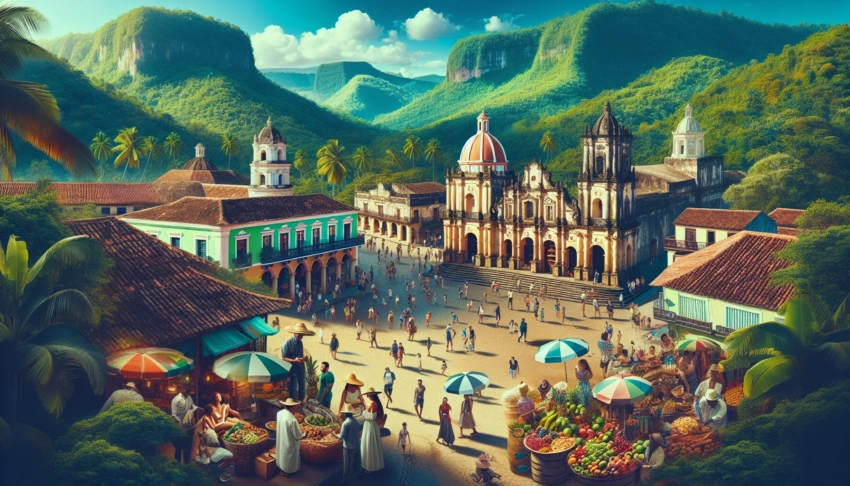
Discover the Dominican Republic Beyond the Resorts
The Dominican Republic is often synonymous with luxurious resorts and pristine beaches. However, beyond these all-inclusive paradises lies a vibrant tapestry of culture, history, and natural beauty waiting to be explored. This guide invites you to discover the heart of the Dominican Republic, where the true essence of the island unfolds in its landscapes, traditions, and people.
1. Understanding the Island’s Geography
Nestled on the eastern two-thirds of the island of Hispaniola, the Dominican Republic boasts a geographical diversity that is nothing short of captivating. From the soaring heights of Pico Duarte, the tallest mountain in the Caribbean, to the vast, lush expanses of the Cibao Valley, the island offers breathtaking landscapes that defy expectations.
The north coast, known as the Amber Coast, is famed for its golden beaches and rich amber deposits, while the Samana Peninsula invites travelers with its rugged cliffs and hidden coves. In contrast, the southwest’s arid regions, like the Bahoruco Mountain Range, provide a starkly different yet equally mesmerizing landscape. This diversity makes each region a unique destination, offering travelers a chance to experience the unspoiled beauty of nature in its various forms.
2. Cultural Richness and Heritage
Beyond its stunning landscapes, the Dominican Republic is a cultural mosaic, woven from the influences of Taino, African, and Spanish heritages. The island’s history is reflected in its music, dance, and art, where Merengue and Bachata rhythms tell stories of its past and present.
The Taino, the island’s indigenous people, have left a lasting impact on the culture, visible in local cuisine and language. African influences shine brightly in the vibrant festivals and the soulful beats of the island’s music. Meanwhile, Spanish colonial architecture, evident in the charming, cobblestone streets of cities like Santo Domingo, whispers tales of a colonial past.
The cultural richness of the Dominican Republic is not just a backdrop; it’s a living, breathing part of everyday life. Visitors can immerse themselves in this heritage through local festivals, museums, and by simply engaging with the warm and welcoming Dominican people.
3. Why Venture Beyond the Resorts?
While the resorts offer a slice of paradise, venturing beyond them reveals an authentic Dominican experience that is both enriching and exhilarating. Exploring the heart of the island allows travelers to connect with the local communities, savor traditional dishes like sancocho and mofongo, and participate in cultural activities that provide a deeper understanding of the Dominican way of life.
Beyond the well-trodden paths, opportunities abound for adventure and discovery. Whether hiking through national parks teeming with wildlife, exploring historic sugar plantations, or visiting vibrant local markets, each excursion paints a richer picture of what it means to be in the Dominican Republic.
Moreover, traveling beyond the resorts supports sustainable tourism, benefiting local economies and promoting cultural exchange. It encourages a connection not only with the land but with the stories and lives of those who call this island home. So, pack your bags and prepare for an adventure that promises more than just a vacation—it offers a journey into the soul of the Dominican Republic.
Natural Wonders and Outdoor Adventures
Prepare to be whisked away into a world where nature’s splendor and pulse-raising adventures coalesce in the Dominican Republic. Beyond the bustling resorts lies an untouched paradise waiting to be explored.
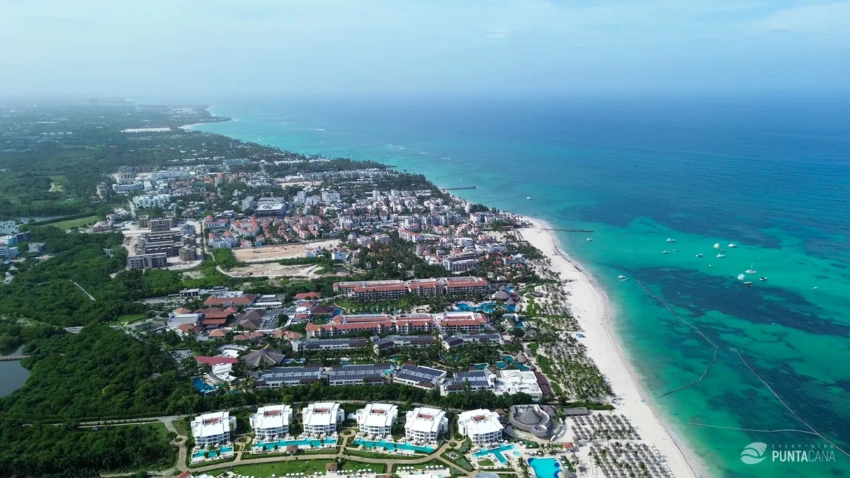
Aerial view of Punta Cana
1. National Parks and Ecological Reserves
The Dominican Republic is a sanctuary for nature enthusiasts, boasting an extensive array of national parks and ecological reserves. These areas protect biodiversity and offer a glimpse into the island’s unique ecosystems. One cannot miss the Los Haitises National Park, a mystical expanse of mangrove forests, limestone karsts, and hidden caves. Exploring this park by boat unveils a rich tapestry of wildlife, including manatees and pelicans.
For those drawn to the mountains, the Pico Duarte stands as the Caribbean’s tallest peak, nestled within the José Armando Bermúdez National Park. This majestic peak invites adventurers to embark on a challenging yet rewarding hike through pine forests and cloud-covered trails. And let’s not forget the Jaragua National Park, home to the stunning Bahia de las Águilas beach and a critical habitat for endangered species.
2. Adventure Activities for Thrill Seekers
If your idea of fun involves heart-thumping adrenaline, the Dominican Republic has you covered. From the thrill of zip-lining through dense tropical canopies to the rush of white-water rafting down the Yaque del Norte River, there’s no shortage of excitement here.
One of the most exhilarating experiences is canyoning in 27 Charcos of Damajagua. Imagine sliding, jumping, and swimming through a series of natural waterfalls and emerald pools—it’s the ultimate adventure playground! Additionally, for those who prefer their feet on the ground, ATV tours across rugged terrains and pristine beaches offer a unique way to explore the island’s diverse landscapes.
Our Best Tours in Punta Cana
Unleash your adventurous spirit by booking a tour that lets you dive headlong into these thrilling activities. Whether it’s the zip-lining escapade or a serene hike through lush forests, our curated excursions promise an unforgettable experience.
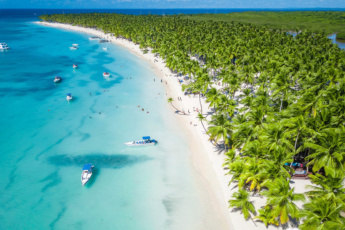
Saona Island Excursion - Caribbean Paradise
from $75 Read more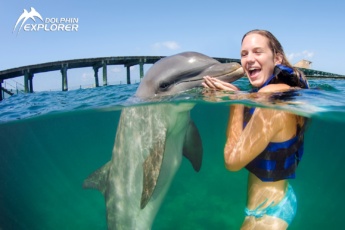
Swimming with Dolphins in Punta Cana - Top Adventure 2025 (50 minutes)
from $149 Read more3. Scenic Hiking Trails
For those who cherish the serenity of nature combined with a touch of physical challenge, the island offers a plethora of hiking trails. The El Choco National Park near Cabarete is a haven for hikers, featuring trails that weave through dense forests, stunning lagoons, and ancient caves.
In the heart of the Dominican Republic, the Valle Nuevo National Park stands out with its unique microclimate and high-altitude flora. The park’s trails lead you to the Aguas Blancas—the highest waterfall in the Caribbean, where the pristine waters cascade gracefully down the mountainside.
Embarking on these trails not only rewards you with breathtaking vistas but also offers a profound connection to the island’s natural heritage. Whether you’re navigating through lush forests or scaling rugged mountains, each step immerses you deeper into the beauty of the Dominican Republic.
Immersing in Local Culture and Traditions
Engaging with the local culture and traditions when visiting the Dominican Republic offers a unique window into the soul of this vibrant nation. Beyond the glitzy resorts and pristine beaches lies a tapestry of rich heritage and customs waiting to be uncovered.
1. Traditional Dominican Cuisine
Prepare your taste buds for a delicious journey
through the flavors of the Dominican Republic. The island’s cuisine is a delightful blend of Taino, African, and Spanish influences, resulting in a culinary landscape that is as diverse as it is delicious. Must-try dishes include “La Bandera”, which translates to “The Flag” and is a hearty meal of rice, beans, and meat that represents the colors of the Dominican flag. Don’t forget to sample “Mangu”, a breakfast staple made from mashed plantains, and “Sancocho”, a savory stew that’s often enjoyed during festivals and family gatherings.
To truly savor these delicacies, venture beyond the tourist traps and seek out local eateries, affectionately known as “comedores”. These spots offer authentic flavors at wallet-friendly prices. For a cultural twist, visit a “Chicharronera” for crispy pork rinds or a street vendor for freshly fried “Empanadas”.
2. Festivals and Celebrations
The Dominican Republic is a land of vibrant celebrations, where locals express their cultural identity with passion and fervor.
One of the most famous is the “Carnaval”, a month-long celebration leading up to Lent. During this time, the streets come alive with colorful parades, lively music, and extravagant costumes. Each region boasts its own unique twist on the festivities, with La Vega being one of the most popular spots to witness the spectacle.
Another noteworthy celebration is the “Merengue Festival” in Santo Domingo. This annual event celebrates the country’s national dance and music genre with live performances, dance contests, and a contagious energy that captures the spirit of the island. Whether you’re a spectator or a participant, these festivals offer a glimpse into the Dominican way of life and its rich cultural diversity.
3. Art and Craftsmanship
For those with an artistic inclination, the Dominican Republic offers a vibrant art scene that reflects its cultural diversity and historical influences.
From traditional crafts to contemporary art, the island is a treasure trove of creativity. Visit the bustling markets in cities like Santo Domingo and Puerto Plata to discover handcrafted items such as “Larimar” jewelry and intricately woven baskets. These unique souvenirs not only support local artisans but also serve as lasting reminders of your cultural adventure.
In addition to traditional crafts, the contemporary art scene is flourishing with galleries and exhibitions showcasing local talent. The Museo de Arte Moderno in Santo Domingo is a must-visit for art lovers, offering a comprehensive collection of modern artworks that highlight the country’s dynamic artistic expressions. Whether you’re admiring ancient crafts or modern masterpieces, the Dominican art scene offers a window into the island’s soul.
Immersing yourself in the local culture and traditions of the Dominican Republic is a rewarding experience that enriches your understanding of this captivating island. From delectable cuisine to vibrant festivals and artistic endeavors, each encounter adds a layer of depth to your travel experience, allowing you to connect with the heart of the Dominican Republic in profound and meaningful ways.
Exploring Historical and Architectural Gems
Step off the beaten path and into the heart of history as you explore the architectural wonders of the Dominican Republic. From the cobblestone streets of Santo Domingo to the echoes of ancient Taino civilizations, there’s a tapestry of stories waiting to be uncovered.
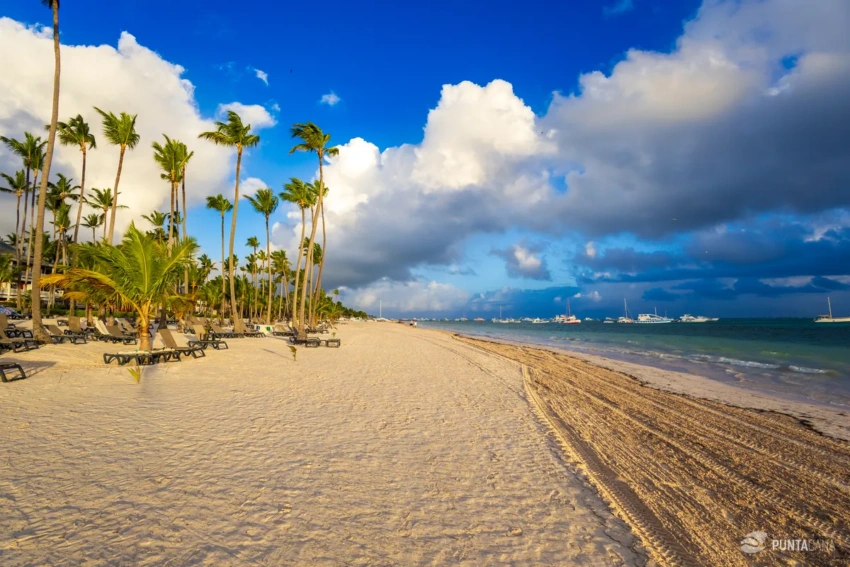
Punta Cana
1. Colonial Zone of Santo Domingo
Imagine walking through a city where every corner whispers tales of explorers and conquerors. Santo Domingo’s Colonial Zone is a mesmerizing blend of history and culture. As the first European city in the Americas, it’s no surprise this area is a UNESCO World Heritage site. Here, you can stroll down Calle de las Damas, the oldest paved street in the New World, and visit the magnificent Catedral Primada de América, the oldest cathedral in the Western Hemisphere.
The Colonial Zone isn’t just about old stones and bricks; it’s alive with vibrant cafes, art galleries, and museums that breathe life into its rich past. Make sure to visit the Alcázar de Colón, the former residence of Diego Columbus, Christopher Columbus’ son, which now houses a museum showcasing period furniture and artwork. The zone is a vivid reminder of the island’s Spanish heritage and offers a glimpse into the life of early settlers.
2. Historic Plantations and Sugar Mills
The Dominican Republic’s history isn’t just confined to urban centers. Venture out to the countryside to explore the remnants of historic plantations and sugar mills that played a pivotal role in the island’s colonial economy. These sites provide a stark yet fascinating insight into the labor-intensive sugar production that defined the region for centuries.
Imagine yourself as an explorer stepping onto the grounds of Ingenio Boca de Nigua, one of the oldest sugar mills in the Americas. This site is not only a window into the past but also a testament to the resilience and ingenuity of the people who once worked here. While some of these plantations are now in ruins, they still offer a poignant narrative of the country’s economic and social history.
Our Best Tours in Punta Cana
Embrace the chance to step back in time with our exclusive tours that delve into the Dominican Republic’s historical essence. These curated experiences will transport you to the heart of the past, offering unique insights and unforgettable memories.

Punta Cana Private Boat Trip at the Best Price - 3-Hour Exclusive Tour with Snorkeling (from Jellyfish to Cabeza de Toro)
from $590 Read more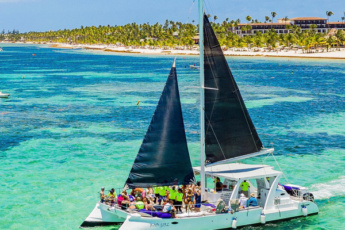
Power Cruise – Punta Cana Party Experience on the Bad Girl Catamaran
from $65 Read more3. Indigenous Taino Sites
Long before European explorers set foot on the island, the Taino people thrived in the Dominican Republic. Their legacy lives on through various archaeological sites scattered across the island. Discovering these ancient sites is like unearthing buried treasures; they offer a deeper understanding of the island’s original inhabitants and their way of life.
Visit the Cueva de las Maravillas (Cave of Wonders), where ancient Taino petroglyphs adorn the walls, telling stories of a civilization long past. Another notable site is the Parque Nacional del Este, home to the Taino’s ceremonial grounds, which provide a glimpse into their spiritual and social practices. These sites are not just historical landmarks; they are sacred spaces that connect visitors to the island’s indigenous roots.
Exploring these historical and architectural gems offers more than just a peek into the past. It is an invitation to immerse yourself in the soul of the Dominican Republic, understanding its triumphs, struggles, and enduring legacy. So, lace up your shoes, grab your camera, and let the island’s stories unfold before your eyes.
Sustainable Tourism and Community Engagement
Embark on a journey that not only satisfies your wanderlust but also contributes positively to the communities you visit. Sustainable tourism is all about making travel choices that benefit the local environment and society, ensuring that the beauty of the Dominican Republic remains preserved for generations to come.
1. Eco-Friendly Accommodations
Imagine waking up in a serene eco-lodge nestled amidst lush greenery, where your morning coffee is brewed with locally sourced beans, and your shower water is heated by solar panels. Eco-friendly accommodations in the Dominican Republic are redefining luxury with a green twist. These establishments prioritize sustainability by implementing measures such as waste reduction, water conservation, and the use of renewable resources.
Guests can enjoy guilt-free relaxation knowing their stay supports practices that minimize environmental impact. Many eco-lodges offer immersive experiences that allow visitors to connect deeply with nature, such as guided nature walks, bird-watching excursions, and organic farming activities. By choosing to stay at these accommodations, you become part of a movement that advocates for a healthier planet.
2. Community-Based Tourism Initiatives
Experience the heart and soul of the Dominican Republic by engaging with its vibrant communities. Community-based tourism initiatives are designed to provide travelers with authentic cultural exchanges while directly benefiting local residents.
These initiatives often include homestays, where visitors can live with a local family, learning about daily life, customs, and traditions firsthand. You might find yourself participating in cooking classes, where the secrets of preparing mouthwatering Sancocho or Mangu are revealed, or you might join in a traditional dance lesson, where the passionate rhythms of Merengue and Bachata come to life.
Community-based tourism not only enriches the traveler’s experience but also empowers local communities by providing them with sustainable income. This model fosters cultural pride and helps preserve traditions that might otherwise fade away.
3. Conservation Efforts and Volunteering
The Dominican Republic is a treasure trove of biodiversity, with stunning ecosystems ranging from coral reefs to cloud forests. Conservation efforts here are crucial to maintaining the island’s natural heritage. Visitors have the unique opportunity to engage in these efforts through volunteering, which is both rewarding and eye-opening.
Volunteering projects can vary from helping with sea turtle conservation on the pristine beaches to reforestation efforts in the verdant highlands. These programs often welcome participants of all ages, offering hands-on experiences that educate and inspire. Not only do you get to contribute to vital environmental causes, but you also gain a deeper appreciation for the delicate balance of nature.
Volunteer and Conservation Opportunities
| Project | Location | Activities | Best Time to Visit |
|---|---|---|---|
| Sea Turtle Conservation | Punta Cana | Monitoring, Nesting, Education | March – August |
| Reforestation Program | Samaná Peninsula | Tree Planting, Maintenance | Year-round |
| Coral Reef Restoration | Bayahibe | Snorkeling, Coral Planting | June – October |
By choosing to engage in sustainable tourism and community involvement, you’re not just a tourist; you’re a steward of the environment, a patron of culture, and a contributor to the prosperity of local communities. The Dominican Republic offers countless opportunities to explore responsibly and leave a positive impact on this paradise island.
Practical Tips for Off-Resort Travel
Embarking on an adventure beyond the confines of luxurious resorts in the Dominican Republic offers a world of rich experiences and breathtaking landscapes. To make sure your journey is as smooth and enjoyable as possible, it’s essential to be prepared. Here’s your ultimate guide to navigating the island safely and comfortably.
1. Transportation Options
Navigating the Dominican Republic is an adventure in itself. With a variety of transportation options available, getting around is both exciting and convenient.
Exploring Transportation Options
| Mode | Pros | Cons | Cost | Best For |
|---|---|---|---|---|
| Public Buses (Guaguas) | Cost-effective, local experience | Can be crowded, slower | Very low | Budget travelers |
| Car Rentals | Flexibility, comfort | Navigation challenges, parking | Moderate to high | Families, groups |
| Motoconchos | Quick, thrilling | Less safe, limited luggage space | Low | Solo travelers, short distances |
| Taxis | Convenient, reliable | More expensive | Moderate | Convenience seekers |
| Private Transfers | Comfort, hassle-free | High cost | High | Luxury travelers |
Public buses, known locally as guaguas, offer a budget-friendly way to explore the island. These buses connect major cities and towns, providing a genuine local experience as you travel. For those who prefer a bit more flexibility, renting a car is an excellent option. While navigating the roads might be a challenge, the ability to explore at your own pace is invaluable.
Motoconchos, or motorcycle taxis, are a thrilling way to zip through the streets, ideal for solo travelers covering short distances. However, they do require caution as safety can be a concern. For a more comfortable ride, taxis and private transfers are available, though they come at a higher cost. These options are perfect for those seeking convenience and a stress-free journey.
2. Safety and Health Considerations
Safety and health are paramount when traveling off the beaten path. The Dominican Republic, while generally safe, requires some precautions to ensure a worry-free experience.
To enjoy your trip to the fullest while staying safe, it’s wise to adhere to some essential guidelines. Being mindful of your surroundings and making informed decisions can go a long way in keeping your adventures both thrilling and secure.
– Stay Informed: Keep an eye on local news and updates about weather conditions or any travel advisories. Being aware of your surroundings is crucial.
– Health Precautions: Drink bottled water and avoid consuming food from street vendors unless it’s recommended by locals or reputable guides. Always have a basic first aid kit on hand.
– Valuables: Keep your valuables secure and avoid displaying them in crowded places. Using a money belt can be a practical solution.
– Travel Insurance: Ensure you have comprehensive travel insurance that covers health, accidents, and theft.
3. Language and Communication
Communicating effectively in a new country can enhance your travel experience significantly. While Spanish is the official language of the Dominican Republic, knowing a few key phrases can make a world of difference.
Engaging with locals in their native language not only shows respect but also opens doors to more authentic experiences. Here are some essential Spanish phrases to help you communicate:
- ¡Hola! – Hello!
- Gracias – Thank you
- ¿Cuánto cuesta? – How much does it cost?
- ¿Dónde está el baño? – Where is the bathroom?
- Necesito ayuda – I need help
Language apps like Duolingo or Google Translate can be incredibly handy for more complex conversations. However, don’t underestimate the power of a friendly smile and gestures—they are universal languages that can bridge any communication gap.
With the right preparation and a sense of adventure, your journey beyond the resorts in the Dominican Republic promises to be an unforgettable exploration filled with culture, nature, and vibrant local life. Embrace the unknown and make memories that will last a lifetime!
Frequently Asked Questions
What are some must-see attractions in the Dominican Republic outside of the resorts?
The Dominican Republic offers a wealth of attractions beyond its resorts. Consider visiting the historic Zona Colonial in Santo Domingo, hiking through the lush landscapes of Los Haitises National Park, or exploring the beautiful beaches and vibrant culture of Samaná Peninsula. These destinations provide a unique glimpse into the country’s rich history and natural beauty.
Is it safe to travel outside the resort areas in the Dominican Republic?
Traveling outside resort areas in the Dominican Republic is generally safe, but it’s important to exercise common travel precautions. Stay informed about local conditions, avoid isolated areas at night, and keep valuables secure. Engaging with local guides and tours can enhance both safety and experience.
How can I experience local culture in the Dominican Republic?
To immerse yourself in Dominican culture, visit local markets, attend a merengue or bachata dance class, and try traditional foods such as sancocho or mofongo. Engaging with local communities and participating in cultural festivals can also provide authentic experiences.
What transportation options are available for exploring the Dominican Republic beyond the resorts?
Transportation options include renting a car, using public buses (known as guaguas), or hiring a private driver. Each has its advantages: renting a car offers flexibility, while buses are more economical. For convenience and comfort, especially for longer distances, hiring a driver or using reputable tour operators is recommended.
Are there any unique natural landscapes to explore in the Dominican Republic?
Yes, the Dominican Republic is home to diverse natural landscapes. Visit the stunning waterfalls of Jarabacoa, explore the lush mangroves and caves of Los Haitises National Park, or trek through the cloud forests of the Central Mountain Range. Each offers a distinct view of the country’s ecological diversity.
What should I pack for a trip beyond the resorts in the Dominican Republic?
When exploring beyond the resorts, pack lightweight clothing, comfortable walking shoes, sunscreen, insect repellent, and a reusable water bottle. If planning outdoor activities, consider packing hiking gear and swimwear. It’s also wise to carry a small backpack for day trips to keep your hands free.
How can I support local communities when traveling outside the resorts?
Support local communities by buying handcrafted souvenirs, dining at local eateries, and choosing accommodations that are locally owned. Participating in community-based tourism initiatives and respecting local customs and traditions further contributes to sustainable tourism.
What are some tips for responsible and sustainable travel in the Dominican Republic?
To travel responsibly, minimize waste by using reusable products, respect wildlife and natural habitats, and choose eco-friendly accommodations and tours. Engage with local conservation efforts and educate yourself on the cultural and environmental practices of the areas you visit.
